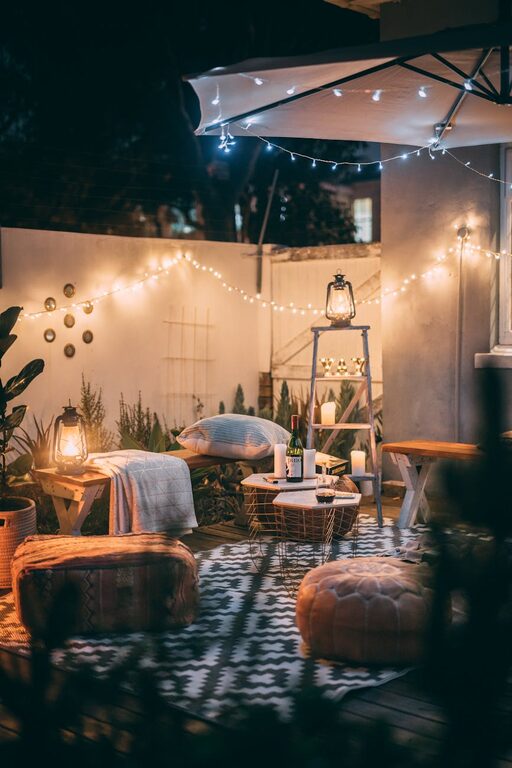Creating a comfortable and inviting atmosphere at home starts with effective lighting. The right lighting not only illuminates your space but also influences mood, productivity, and relaxation. Choosing comfortable home lighting involves more than just picking the brightest bulbs; it’s about understanding your space, lifestyle, and preferences. This guide walks you through practical tips to help you select lighting that feels just right.
Why Comfortable Home Lighting Matters
Lighting affects how you perceive your environment. Harsh or poorly placed lights can cause eye strain, headaches, or simply make a room feel cold and unwelcoming. Comfortable lighting, on the other hand, complements your activities—whether reading, cooking, relaxing, or working—and sets the tone for each room.
Understand Different Types of Lighting
Before choosing lighting fixtures, it’s helpful to understand the three main types of lighting used in homes:
– Ambient lighting: This is the general lighting that fills a room, providing overall illumination. Examples include ceiling lights, chandeliers, or recessed lighting.
– Task lighting: Focused lighting for specific tasks like reading, cooking, or working. Desk lamps or under-cabinet lights are common examples.
– Accent lighting: Decorative lighting that highlights features or creates mood, such as wall sconces, picture lights, or LED strips.
Balancing these types ensures your home is well-lit yet comfortable.
Choose the Right Color Temperature
Color temperature, measured in Kelvins (K), influences how warm or cool the light appears:
– Warm light (2700K–3000K): Offers a cozy, inviting glow, ideal for living rooms, bedrooms, and dining areas.
– Neutral light (3500K–4100K): Balanced light suited for kitchens, bathrooms, or workspaces.
– Cool light (5000K–6500K): Mimics daylight, good for task-oriented areas like garages or home offices.
For comfort, many people prefer warm or neutral tones in living spaces to create a relaxing environment.
Consider Brightness and Dimming Options
Brightness is measured in lumens. Higher lumens mean brighter light. When selecting bulbs or fixtures:
– Use lower lumens in bedrooms or lounges to keep the atmosphere calm.
– Use higher lumens in kitchens, study areas, or bathrooms for clarity.
– Invest in dimmable lights or smart bulbs to adjust brightness according to needs and times of day.
Dimming options allow you to customize your lighting easily, enhancing comfort.
Select Fixtures That Complement Your Space
Lighting fixtures contribute to both function and style. When choosing fixtures:
– Match the size of the fixture to your room’s dimensions. Oversized fixtures can overwhelm small rooms; tiny ones may look out of place in large areas.
– Choose styles that blend with your décor, whether modern, traditional, or rustic.
– Use adjustable fixtures like track lighting or lamps with movable heads to direct light where it’s needed.
Layer Your Lighting Strategically
Layering lighting means combining ambient, task, and accent lights for flexibility and comfort. For example:
– In the living room, use a ceiling fixture for ambient light, table lamps for reading, and wall sconces for accent lighting.
– In the kitchen, use recessed lights for overall lighting, under-cabinet lights for tasks, and pendant lights over an island for style and function.
Layered lighting helps avoid shadows and glare, making the room pleasant and practical.
Pay Attention to Light Placement
The placement of your lighting fixtures can greatly impact comfort:
– Avoid placing lights directly above seating to prevent glare.
– Position task lights to shine from the opposite side of your dominant hand to reduce shadows when working.
– Consider natural light sources and how they change throughout the day; supplement with artificial lighting where needed.
Opt for Energy-Efficient Solutions
Comfortable lighting should also be energy-conscious. LED bulbs use less electricity, last longer, and produce less heat than traditional bulbs. Many LED options offer adjustable color temperatures and dimmability, giving you comfort and savings.
Experiment with Smart Lighting
Smart lighting systems allow you to control brightness, color, and timing from your smartphone or voice assistant. You can create scenes for different moods—bright for cooking, soft for watching movies—or schedule lights to turn on and off automatically, improving convenience and comfort.
Final Thoughts
Choosing comfortable home lighting is about understanding your space, needs, and personal style. By balancing light types, selecting appropriate brightness and color temperature, layering lighting, and considering fixture design and placement, you can create a home that feels inviting and suits your lifestyle. Remember, lighting is not only functional but also a key part of your home’s ambiance—choose lighting that makes you feel truly comfortable and happy in your space.

